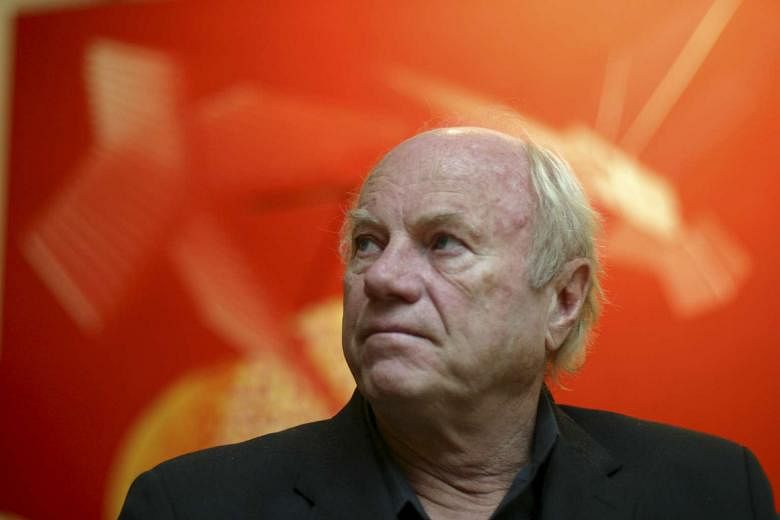NEW YORK (AFP) - James Rosenquist, a leading pioneer of Pop Art who appropriated industrial painting methods to cultivate his bold, graphic style, has died in New York. He was 83.
The internationally acclaimed artist passed away Friday (March 31) at his home following a long illness, according to The New York Times, citing his wife.
Rosenquist transitioned from a commercial sign-painter to a fine artist who, along with contemporaries Andy Warhol, Roy Lichtenstein and Jasper Johns, helped launch the 1960s Pop art movement onto the global stage.
A genre that blurred the lines between high and low culture by channeling advertising and consumer products, Pop art seemed a natural fit for Rosenquist, who spent years painting large-scale billboards.
He translated those skills to his art, moving from more Abstract Expressionist-style work to painting mostly representational, punchy consumerist images.
He often juxtaposed his spliced images - such as cars, home appliances and twisting pasta - in the collage style, a technique often ascribed to the Surrealist movement.
He rarely took an overt political stance with his work, but Rosenquist's best known 1965 piece protested US militarism in Vietnam.
The 86-foot long "F-111" depicts the body of a modern fighter-bomber plane that spans 23 panels, interspersed with fragmented imagery of war references and commercial products.
The artist once described the piece, which was shown at New York's Museum of Modern Art in 2012, as questioning "the collusion between the Vietnam death machine, consumerism, the media and advertising."
Born in Grand Forks, North Dakota on Nov 29, 1933, his family relocated throughout the Midwest before settling in Minneapolis in 1944.
While studying studio art at the University of Minnesota from 1952-1954, he spent summers painting storage tanks, grain silos and gas station signs to pay the bills.
He moved to New York in 1955 on a one-year art scholarship and began frequenting the city's Greenwich Village, then a petri dish of artistic innovation and the avant garde.
In the Village Rosenquist hobnobbed with other now-famous artists including Willem de Kooning and Franz Kline.
In addition to his New York residence, Rosenquist also spent many of his later years in Florida. A 2009 brush fire there devastated several of his buildings - including his studio, which contained a number of works that were destroyed.

